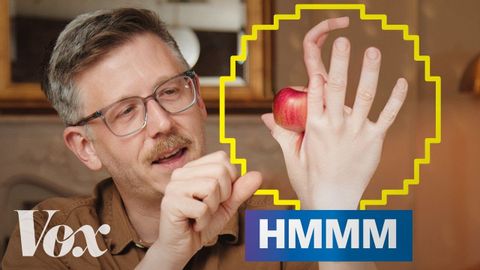AIイラストは「手」が正確に描けない?その理由とは?
Nina Kuo が 2023 年 04 月 11 日 に投稿  この条件に一致する単語はありません
この条件に一致する単語はありませんUS /ˈrek.əɡ.naɪz/
・
UK /ˈrek.əɡ.naɪz/
- v.t.(~が本当であると)認める : 受け入れる;(重要性を)認める;法的権威を尊重する;公にその人の貢献を称賛する;認識する、認知する
- n. (c./u.)模範 : 見本;模様 : 柄;様式;規則性;型紙
- v.t.模倣する;模様をつける
エネルギーを使用
すべての単語を解除
発音・解説・フィルター機能を解除
